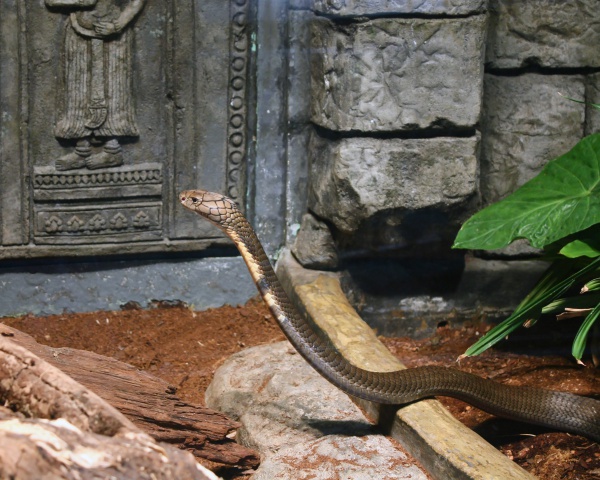Facts About King cobra
The king cobra, also known as the hamadryad, is a fascinating yet dangerous snake native to forests stretching from India to Southeast Asia. Unfortunately, it faces significant threats due to habitat destruction and has been listed as Vulnerable on the IUCN Red List since 2010. As the world's longest venomous snake, adult king cobras can reach lengths of 3.18 to 4 meters. They primarily prey on other snakes but will also hunt lizards and rodents when necessary. Despite their fearsome reputation, king cobras are generally shy and prefer to avoid human contact.
In taxonomy, the king cobra is unique as the sole species of the genus Ophiophagus. Its scientific name, Ophiophagus hannah, was designated in 1945. These snakes are easily identifiable by their olive-green skin adorned with black and white bands, a rounded snout, two prominent fangs, and an oval-shaped hood. Males tend to be larger than females, with the longest recorded king cobra measuring an impressive 5.85 meters.
King cobras are widely distributed across South and Southeast Asia, inhabiting various countries up to elevations of 2,000 meters. Their diet primarily consists of other snakes and lizards, but they will also consume birds and small mammals if food is scarce. Using their forked tongue, they can detect prey and are known for their distinctive growling hiss. Reproductively, female king cobras build nests and lay clutches of eggs, with hatchlings being just as venomous as adults.
The venom of a king cobra is a potent mix of cytotoxins and neurotoxins, causing severe pain, paralysis, and potentially death if a bite is not treated promptly. Antivenom is available, and immediate medical attention is critical for survival. Sadly, these snakes face significant threats from habitat destruction and poaching. Conservation efforts are in place, including their listing on CITES Appendix II and protection under various wildlife acts.
Culturally, the king cobra holds a special place in the mythology and traditions of countries like India, Sri Lanka, Myanmar, and Thailand. Snake charmers and rituals involving the king cobra are part of the cultural fabric, and some cultures even believe in the mystical properties of cobra stones or pearls.

 China
China